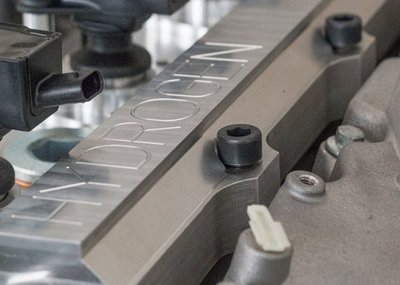Amsterdam - A researcher has shown that an <link _top>alloy of the metals <link _top>magnesium, <link _top>titanium and <link _top>nickel is excellent at absorbing hydrogen, and is sixty percent less than a battery pack, which brings the world a step closer to the everyday use of hydrogen as a source of fuel for powering vehicles.
The researcher in question is Robin Gremaud, who was sponsored by the Netherlands Organisation for Scientific Research (NWO).
In order to find the best <link _top>alloy, Gremaud developed a method that enabled simultaneous testing of thousands of samples of different metals for their capacity to <link _top>absorb hydrogen, which led to the creation of the new <link _top>alloy.
Hydrogen is considered to be a clean and therefore important fuel of the future.
But, the major problem of using hydrogen in transport is the secure storage of this highly explosive gas. This can be realised by using metals that <link _top>absorb the gas.
However, a drawback of this approach is that it makes the hydrogen 'tanks' somewhat cumbersome, a fact already observed in the battery, which is the competing form of storage for electrical energy. Or example, driving four hundred kilometres with an electric car, such as the Toyota Prius, would require the car to carry 317 kilos of modern lithium batteries for its journey.
But, with Gremaud's <link _top>light metal alloy, this same distance would require a hydrogen tank of 'only' two hundred kilos.
In his research, Gremaud made use of a technique for measuring the absorbance of hydrogen by metals, based on the phenomenon of 'switchable mirrors' discovered at the VU University Amsterdam.
About ten years ago, researchers at the VU discovered that certain materials lose their reflection by absorbing hydrogen.
This technique became known as hydrogenography, or 'writing with hydrogen'.
Using this technique, Gremaud was able to simultaneously analyze the efficacy of thousands of different combinations of the metals <link _top>magnesium, <link _top>titanium and <link _top>nickel.
Traditional methods require separate testing for each <link _top>alloy.
The analysis requires each of the three metals to be eroded from an individual source and deposited onto a transparent <link _top>film in a thin layer of 100 nanometres using so-called sputtering deposition.
This ensures that the three metals are deposited onto the <link _top>film in many different ratios.
When the <link _top>film is exposed to different amounts of hydrogen, it is clearly visible, even to the naked eye, which composition of metals is best at absorbing hydrogen.
Gremaud is the first to use this method for measuring hydrogen absorption.
The British company Ilika in Southampton wants to build a hydrogen analyzer using this technique.


